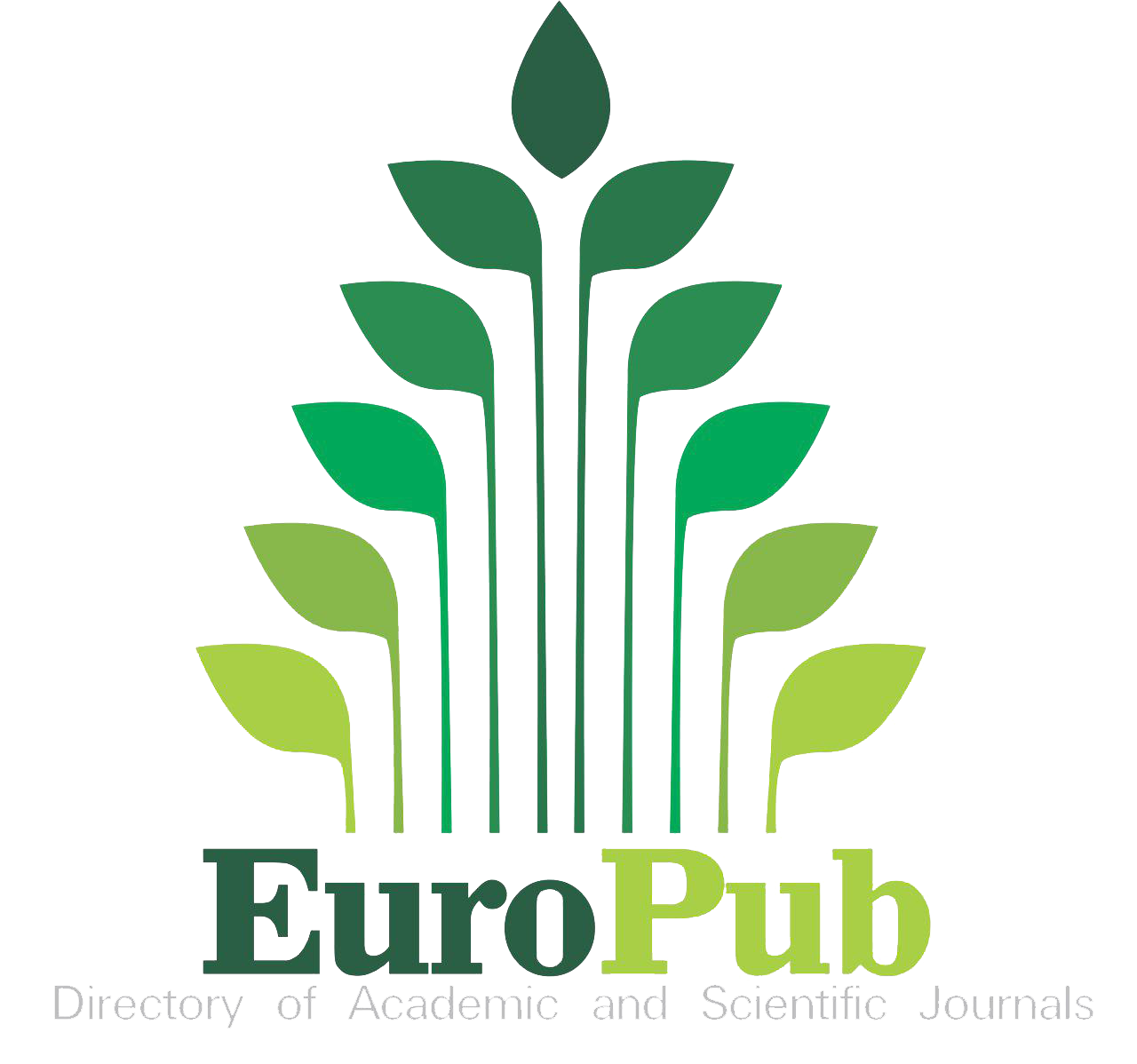CRISPR-Cas9 as a gene editing tool using cardiac glycoside reductase operon for digoxin metabolism
DOI:
https://doi.org/10.60087/jklst.v3.n4.p224Abstract
Gene editing technology has gained popularity over the past two decades with the scientific advancements being made in genetics and computational biology. CRISPR-Cas9 technique allows us to target genetic material and perform accurate manipulation of targeted gene function. Cgr operon, commonly found in the gut microbiome bacteria of E. lenta has several attributes which can be modified using the CRISPR-Cas9 methodology. Here, we briefly describe how the Cas9 nuclease can be used to prevent Digoxin from being suppressed by the cgr gene, directly correlating to improved cardiac function. The editing tool is described to assist in mutating the genetic material of cgr gene discussing the inhibition of Na+/K+ ATPase in cardiac myocytes and CG-content. The principle of operation behind CRISPR-Cas9 is described using non-homologous end joining or homology-directed repair cellular mechanisms. Target site selection, designing sgRNAs and introducing various mutations are discussed with limitations of current technology and possible applications in the field of point of care diagnostics and biosensing developing therapeutic interventions using cgr operon.
Downloads
References
Y. Ishino, M. Krupovic, and P. Forterre, “History of CRISPR-Cas from Encounter with a Mysterious Repeated Sequence to Genome Editing Technology,” Journal of bacteriology, vol. 200, no. 7, pp. e00580-17, Apr. 2018, doi: https://doi.org/10.1128/JB.00580-17.
Ishino Y, Shinagawa H, Makino K, Amemura M, Nakata A. Nucleotide sequence of the iap gene, responsible for alkaline phosphatase isozyme conversion in Escherichia coli, and identification of the gene product. J Bacteriol. 1987 Dec;169(12):5429-33. doi: 10.1128/jb.169.12.5429-5433.1987.
I. Gostimskaya, “CRISPR–Cas9: A History of Its Discovery and Ethical Considerations of Its Use in Genome Editing,” Biochemistry (Moscow), vol. 87, no. 8, pp. 777–788, Aug. 2022, doi: https://doi.org/10.1134/s0006297922080090.
M. Redman, A. King, C. Watson, and D. King, “What Is CRISPR/Cas9?,” Archives of Disease in Childhood - Education & Practice Edition, vol. 101, no. 4, pp. 213–215, Apr. 2016, doi: https://doi.org/10.1136/archdischild-2016-310459.
Periketi, P.; Kaur, K. .; Naseer Vaid, F. .; Sree M, Y. .; Madhu, M. .; Verma, S. .; Dhingra, K. . Blood Brain Barrier-on-a-Chip Permeation to Model Neurological Diseases Using Microfluidic Biosensors. J. Knowl. Learn. Sci. Technol. 2024, 3 (4), 78-93. https://doi.org/10.60087/jklst.v3.n4.p78.
P. Liang et al., “CRISPR/Cas9-mediated Gene Editing in Human Tripronuclear Zygotes,” Protein & Cell, vol. 6, no. 5, pp. 363–372, Apr. 2015, doi: https://doi.org/10.1007/s13238-015-0153-5.
G. J. Knott and J. A. Doudna, “CRISPR-Cas guides the future of genetic engineering,” Science, vol. 361, no. 6405, pp. 866–869, Aug. 2018, doi: https://doi.org/10.1126/science.aat5011.
M. L. Nuccio, H. Claeys, and K. S. Heyndrickx, “CRISPR-Cas technology in corn: a new key to unlock genetic knowledge and create novel products,” Molecular Breeding, vol. 41, no. 2, Feb. 2021, doi: https://doi.org/10.1007/s11032-021-01200-9.
M. Tiruneh G/Medhin, E. Chekol Abebe, T. Sisay, N. Berhane, T. Bekele, and T. Asmamaw Dejenie, “Current Applications and Future Perspectives of CRISPR-Cas9 for the Treatment of Lung Cancer,” Biologics: Targets and Therapy, vol. Volume 15, no. 15, pp. 199–204, May 2021, doi: https://doi.org/10.2147/btt.s310312.
Pundlik, A.; Verma, S.; Dhingra, K. Neural Pathways Involved in Emotional Regulation and Emotional Intelligence. J. Knowl. Learn. Sci. Technol. 2024, 3 (3), 165-192. https://doi.org/10.60087/jklst.vol3.n3.p.165-192.
Gupte, P.; Dhingra, K.; Saloni , V. Precision Gene Editing Strategies With CRISPR-Cas9 for Advancing Cancer Immunotherapy and Alzheimer’s Disease. J. Knowl. Learn. Sci. Technol. 2024, 3 (4), 11-21. https://doi.org/10.60087/jklst.v3.n4.p11.
S. Altschul, “Gapped BLAST and PSI-BLAST: a new generation of protein database search programs,” Nucleic Acids Research, vol. 25, no. 17, pp. 3389–3402, Sep. 2018, doi: https://doi.org/10.1093/nar/25.17.3389.
J. Soding, A. Biegert, and A. N. Lupas, “The HHpred interactive server for protein homology detection and structure prediction,” Nucleic Acids Research, vol. 33, no. Web Server, pp. W244–W248, Jul. 2005, doi: https://doi.org/10.1093/nar/gki408.
Kazim, I.; Gande, T.; Reyher, E. .; Gyatsho Bhutia, K. .; Dhingra, K.; Verma, S. Advancements in Sequencing technologies:: From Genomic Revolution to Single-Cell Insights in Precision Medicine. J. Knowl. Learn. Sci. Technol. 2024, 3 (4), 108-124. https://doi.org/10.60087/jklst.v3.n4.p108.
H. J. Haiser, K. L. Seim, E. P. Balskus, and P. J. Turnbaugh, “Mechanistic insight into digoxin inactivation byEggerthella lentaaugments our understanding of its pharmacokinetics,” Gut Microbes, vol. 5, no. 2, pp. 233–238, Jan. 2014, doi: https://doi.org/10.4161/gmic.27915.
J. Lindenbaum, D. Rund, V. P. Butler, D. Tse-Eng, and J. R. Saha, “Inactivation of Digoxin by the Gut Flora: Reversal by Antibiotic Therapy,” The New England Journal of Medicine, vol. 305, no. 14, pp. 789–794, Oct. 1981, doi: https://doi.org/10.1056/nejm198110013051403.
E. Saunders et al., “Complete genome sequence of Eggerthella lenta type strain (IPP VPI 0255T),” Standards in genomic sciences, vol. 1, no. (2), pp. 174–182, Sep. 2009, doi: https://doi.org/10.4056/sigs.33592.
M. J. Burton et al., “A heme-binding domain controls regulation of ATP-dependent potassium channels,” Proceedings of the National Academy of Sciences, vol. 113, no. 14, pp. 3785–3790, Mar. 2016, doi: https://doi.org/10.1073/pnas.1600211113.
“Eggerthella lenta DSM 2243, complete sequence,” NCBI Nucleotide, Mar. 2024, Accessed: Jul. 05, 2024.https://www.ncbi.nlm.nih.gov/nuccore/NC_013204.1?from=2957948&to=2958598&report=genbank&strand=true
“About Us - Introduction of BiologicsCorp,” BiologicsCorp. https://www.biologicscorp.com/about-us/#.Wgo8QRNSxQI
F. Lassalle, S. Périan, T. Bataillon, X. Nesme, L. Duret, and V. Daubin, “GC-Content Evolution in Bacterial Genomes: The Biased Gene Conversion Hypothesis Expands,” PLOS Genetics, vol. 11, no. 2, p. e1004941, Feb. 2015, doi: https://doi.org/10.1371/journal.pgen.1004941.
D. Yang et al., “GC-Content Dependence of Elastic and Overstretching Properties of DNA:RNA Hybrid Duplexes,” Biophysical Journal, vol. 119, no. 4, pp. 852–861, Aug. 2020, doi: https://doi.org/10.1016/j.bpj.2020.06.034.
T. I. Moy, D. Boettner, J. C. Rhodes, P. A. Silver, and D. S. Askew, “Identification of a role for Saccharomyces cerevisiae Cgr1p in pre-rRNA processing and 60S ribosome subunit synthesis,” Microbiology, vol. 148, no. 4, pp. 1081–1090, Apr. 2002, doi: https://doi.org/10.1099/00221287-148-4-1081.
J. L. Goldstein, D. Glossip, S. Nayak, and K. Kornfeld, “The CRAL/TRIO and GOLD Domain Protein CGR-1 Promotes Induction of Vulval Cell Fates in Caenorhabditis elegans and Interacts Genetically With the Ras Signaling Pathway,” Genetics, vol. 172, no. 2, pp. 929–942, Feb. 2006, doi: https://doi.org/10.1534/genetics.104.035550.
J. Sun, M. McFarland, D. Boettner, J. Panepinto, J. C. Rhodes, and D. S. Askew, “Cgr1p, a Novel Nucleolar Protein Encoded by Saccharomyces cerevisiae Orf YGL0292w,” Current Microbiology, vol. 42, no. 1, pp. 65–69, Jan. 2001, doi: https://doi.org/10.1007/s002840010180.
T. I. Moy, D. Boettner, J. C. Rhodes, P. A. Silver, and D. S. Askew, “Identification of a role for Saccharomyces cerevisiae Cgr1p in pre-rRNA processing and 60S ribosome subunit synthesis,” Microbiology, vol. 148, no. 4, pp. 1081–1090, Apr. 2002, doi: https://doi.org/10.1099/00221287-148-4-1081.
Dongre, A. .; Nale, T. . .; Ramavajhala, A.; Mahanta, D. .; Sharma, . O. .; Wadhwa, H. H. .; Dhingra, K. .; Verma, S. . The Evolution of Transdermal Drug Delivery: From Patches to Smart Microneedle-Biosensor Systems. J. Knowl. Learn. Sci. Technol. 2024, 3 (4), 160-168. https://doi.org/10.60087/jklst.vol3.n4.p160.
Chandna, R. .; Bansal, A.; Kumar, A.; Hardia, S.; Daramola, O.; Sahu, A.; Verma, K.; Dhingra, K.; Verma, S. Skin Disease Classification Using Two Path Deep Transfer Learning Models. J. Knowl. Learn. Sci. Technol. 2024, 3 (4), 169-187. https://doi.org/10.60087/jklst.v3.n4.p169.
M. A. Mengstie et al., “Recent Advancements in Reducing the Off-Target Effect of CRISPR-Cas9 Genome Editing,” Biologics: Targets and Therapy, vol. 18, pp. 21–28, Jan. 2024, doi: https://doi.org/10.2147/BTT.S429411.
Chilmakuri, L.; Mishra, A. K.; Shokeen, D. .; Gupta, P. .; Wadhwa, H. H.; Dhingra, K. .; Verma, S. A Wearable EMG Sensor for Continuous Wrist Neuromuscular Activity for Monitoring. J. Knowl. Learn. Sci. Technol. 2024, 3 (4), 148-159. https://doi.org/10.60087/jklst.v3.n4.p148.
Mehta, A.; Alaiashy, O.; Kumar, P.; Tamilinian, V.; Besong, S.; Balpande, S.; Verma, S.; Dhingra, K. Advancing Model-Based Systems Engineering in Biomedical and Aerospace research:: A Comprehensive Review and Future Directions. J. Knowl. Learn. Sci. Technol. 2024, 3 (4), 133-147. https://doi.org/10.60087/jklst.v3.n4.p133.
Ruthwik Guntupalli, Saloni Verma and Karan Dhingra 2024. Impact of Healthcare Digitization: Systems Approach for Integrating Biosensor Devices and Electronic Health with Artificial Intelligence. American Scientific Research Journal for Engineering, Technology, and Sciences. 98, 1 (Aug. 2024), 246–257, https://asrjetsjournal.org/index.php/American_Scientific_Journal/article/view/10786/2789.
[33] H. J. Pandya et al., “Label-free electrical sensing of bacteria in eye wash samples: A step towards point-of-care detection of pathogens in patients with infectious keratitis,” Biosensors and Bioelectronics, vol. 91, pp. 32–39, May 2017, doi: https://doi.org/10.1016/j.bios.2016.12.035.
H. J. Pandya et al., “A microfluidic platform for drug screening in a 3D cancer microenvironment,” Biosensors and Bioelectronics, vol. 94, pp. 632–642, Aug. 2017, doi: https://doi.org/10.1016/j.bios.2017.03.054.
M. Safavieh et al., “Paper microchip with a graphene-modified silver nano-composite electrode for electrical sensing of microbial pathogens,” Nanoscale, vol. 9, no. 5, pp. 1852–1861, 2017, doi: https://doi.org/10.1039/c6nr06417e.
GhavamiNejad P, GhavamiNejad A, Zheng H, Dhingra K, Samarikhalaj M, Poudineh M., “A Conductive Hydrogel Microneedle‐Based Assay Integrating PEDOT:PSS and Ag‐Pt Nanoparticles for Real‐Time, Enzyme‐Less, and Electrochemical Sensing of Glucose,” Advanced Healthcare Materials, vol. 12, no. 1, Oct. 2022, doi: https://doi.org/10.1002/adhm.202202362.
S. Odinotski et al., “A Conductive Hydrogel‐Based Microneedle Platform for Real‐Time pH Measurement in Live Animals,” Small, vol. 18, no. 45, Sep. 2022, doi: https://doi.org/10.1002/smll.202200201.
[38] GhavamiNejad P, GhavamiNejad A, Zheng H, Dhingra K, Samarikhalaj M, Poudineh M., “A Conductive Hydrogel Mi-croneedle‐Based Assay Integrating PEDOT:PSS and Ag‐Pt Nanoparticles for Real‐Time, Enzyme‐Less, and Electro-chemical Sensing of Glucose,” Advanced Healthcare Materials, vol. 12, no. 1, Oct. 2022, doi: https://doi.org/10.1002/adhm.202202362.
Kulkarni S, Dhingra K, Verma S., "Applications of CMUT Technology in Medical Diagnostics: From Photoacoustic to Ultrasonic Imaging", International Journal of Science and Research (IJSR), Volume 13 Issue 6, June 2024, pp. 1264-1269, https://www.ijsr.net/ar-chive/v13i6/SR24619062609.pdf.
Downloads
Published
Issue
Section
License
Copyright (c) 2024 Journal of Knowledge Learning and Science Technology ISSN: 2959-6386 (online)

This work is licensed under a Creative Commons Attribution 4.0 International License.
©2024 All rights reserved by the respective authors and JKLST.









